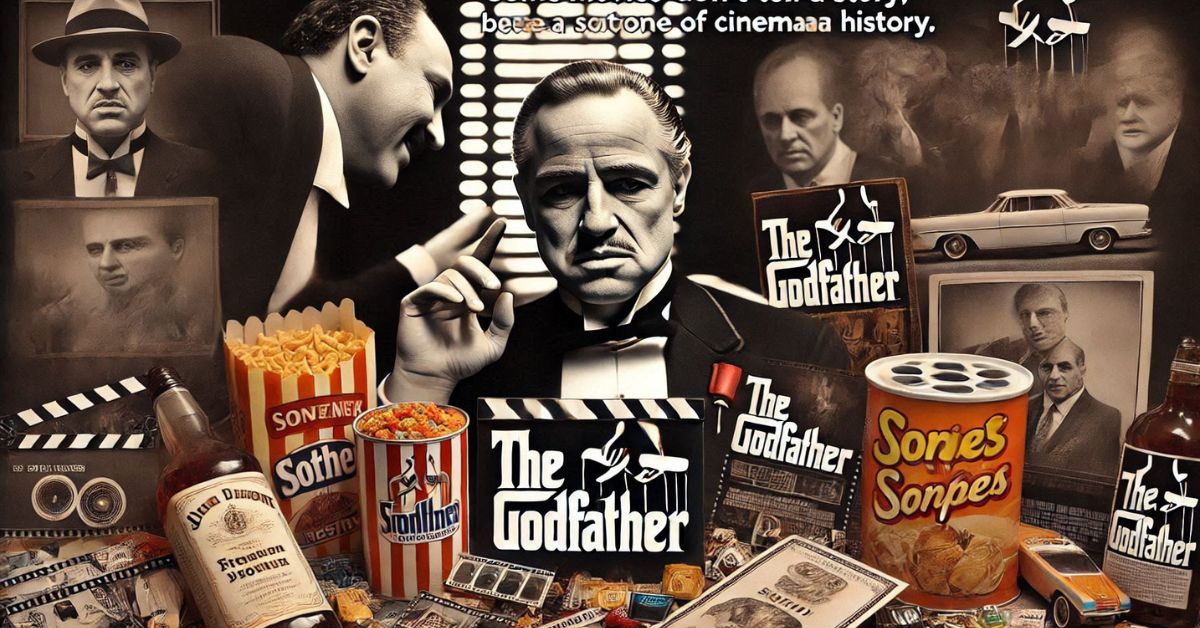Some movies don’t just tell a story; they become a cornerstone of cinematic history. The Godfather Part II, directed by the legendary Francis Ford Coppola, stands tall as one of those timeless masterpieces. Released in 1974, this sequel dared to expand on the universe created in The Godfather, delivering a layered, ambitious narrative that elevated the saga into a cultural phenomenon.
For classic movie lovers, this is not just a film—it’s an experience that defines why cinema is considered an art form. In this review, we’ll dive into the dual narratives, iconic performances, and why this film is often revered as the finest sequel ever made.
So, whether you’re revisiting it for the hundredth time or just stepping into the world of the Corleones, this is a tribute to a cinematic treasure.
Plot Overview (No Spoilers!)
The Godfather Part II takes a bold narrative approach by weaving together two parallel stories. On one hand, we follow the early life of Vito Corleone, portrayed brilliantly by Robert De Niro, as he rises from a Sicilian immigrant struggling to survive to a formidable mafia don in 1920s New York. On the other hand, we witness Michael Corleone’s (Al Pacino) journey as he struggles to consolidate his power in the 1950s while facing betrayal, familial tensions, and moral decay.
This dual narrative structure not only deepens our understanding of the Corleone family but also creates a poignant contrast between a man building an empire and another slowly losing everything he once held dear. It’s a slow burn of tension, emotion, and intrigue that captivates from the opening scene to the closing frame.
Why It’s a Cinematic Masterpiece
Classic movie enthusiasts know that a masterpiece is about more than just story; it’s about the synergy of performances, direction, writing, and visuals. Here’s why The Godfather Part II is a gold standard in filmmaking:
1. Stellar Performances
- Al Pacino delivers a career-defining performance as Michael Corleone. His transformation from a calculated, stoic leader to a haunted, isolated figure is a masterclass in subtlety and intensity.
- Robert De Niro shines as the young Vito Corleone, embodying the quiet strength and cunning that made Marlon Brando’s portrayal in the first film so iconic. His performance is so compelling that it earned him an Academy Award for Best Supporting Actor.
- The supporting cast, including Diane Keaton as Kay and John Cazale as Fredo, adds depth and complexity, making every interaction unforgettable. Cazale’s portrayal of Fredo, in particular, brings a heartbreaking vulnerability that lingers long after the credits roll.
2. Visionary Direction
- Francis Ford Coppola’s direction is nothing short of genius. Balancing two timelines seamlessly, he crafts a narrative that feels epic in scope yet intimate in emotion. His ability to draw out nuanced performances and create a palpable atmosphere solidifies his place among the greatest directors of all time.
- The pacing of the film is deliberate, demanding the audience’s attention and rewarding them with moments of profound emotional resonance. Coppola’s decision to use parallel narratives underscores the cyclical nature of power and ambition.
3. Masterful Writing
- Co-written by Coppola and Mario Puzo, the screenplay is rich with layers of meaning, sharp dialogue, and emotional depth. Lines like “Keep your friends close, but your enemies closer” have become cultural touchstones. Every line of dialogue feels purposeful, revealing character motivations or advancing the intricate plot.
4. Cinematic Excellence
- Cinematographer Gordon Willis, known as the “Prince of Darkness,” uses light and shadow to evoke mood and tension. From the sunlit streets of Little Italy to the shadowy interiors of Michael’s estate, every frame is a visual feast. His meticulous framing emphasizes the isolation and moral decay of Michael, contrasting it with the vibrant, hopeful beginnings of young Vito.
- Nino Rota’s haunting score adds another layer of depth, with themes that perfectly encapsulate the film’s emotional core. The music seamlessly weaves between melancholy and menace, reflecting the shifting tones of the narrative.
Themes and Lessons
What makes The Godfather Part II resonate so deeply with classic film lovers is its exploration of universal themes:
- Power and Corruption: The film delves into how power can corrupt even the most well-meaning individuals. Michael’s descent into moral darkness serves as a cautionary tale, showing how ambition can erode humanity.
- Family and Loyalty: While family is at the heart of the Corleones’ lives, the film exposes the cracks in their unity, questioning the cost of loyalty. Michael’s strained relationships with his wife Kay and brother Fredo add layers of tragedy to the story.
- Ambition and Legacy: Vito’s story is one of building a legacy, while Michael’s is about struggling to preserve it. The juxtaposition is both heartbreaking and thought-provoking, showing how success often comes at a personal cost.
For classic movie fans, the film is a reminder of the timeless truths about ambition, sacrifice, and the human condition. It invites viewers to reflect on the choices that define us and the legacies we leave behind. It’s also a meditation on the cyclical nature of power—how the sins of the father echo through the lives of his children.
Comparison with The Godfather (Part I)
The age-old debate among cinephiles: Is The Godfather Part II better than its predecessor? While the original is a cinematic marvel, Part II expands the narrative, delves deeper into its characters, and offers a richer, more complex story.
- Expanded Narrative: Part I focuses on Michael’s rise, while Part II explores both his and Vito’s journeys, creating a more layered narrative.
- Richer Performances: With Pacino and De Niro at their peak, the performances in Part II are unforgettable. De Niro’s ability to capture Vito’s mannerisms while making the role his own is a testament to his talent.
- Emotional Depth: Part II is darker, more introspective, and arguably more poignant, making it resonate deeply with fans of classic, character-driven storytelling. The tragic arc of Michael’s isolation, culminating in the iconic final scene, leaves an indelible impact.
Ultimately, both films complement each other, forming a saga that’s greater than the sum of its parts. Part II doesn’t just expand on the original—it enriches it, offering a broader canvas for the Corleone family’s epic tale.
Cultural Impact
The Godfather Part II is more than a film; it’s a cultural milestone. Here’s why it’s revered by classic movie lovers:
- Award-Winning Legacy: It was the first sequel to win the Academy Award for Best Picture, alongside five other Oscars. This recognition cemented its place in cinematic history.
- Influence on Cinema: From its narrative structure to its character arcs, the film has inspired countless directors and writers. Its impact can be seen in everything from modern crime dramas to character-driven epics.
- Enduring Relevance: Decades later, it remains a benchmark for storytelling, performance, and filmmaking. Its themes of power, family, and betrayal continue to resonate with audiences, proving that great art transcends time.
Its legacy is a testament to the power of cinema to transcend time and connect with audiences on a profound level. For fans of classic movies, it’s a reminder of why we fell in love with film in the first place.
Should You Watch It?
If you’re a lover of classic cinema, The Godfather Part II is non-negotiable. It’s a film that doesn’t just entertain—it enriches your appreciation for the art of storytelling. Whether you’re drawn to its powerful performances, its intricate plot, or its visual splendor, there’s something here for everyone.
For those new to the franchise, it’s a chance to immerse yourself in one of the greatest sagas ever told. For long-time fans, it’s an opportunity to rediscover the subtle brilliance that makes this film a masterpiece.


